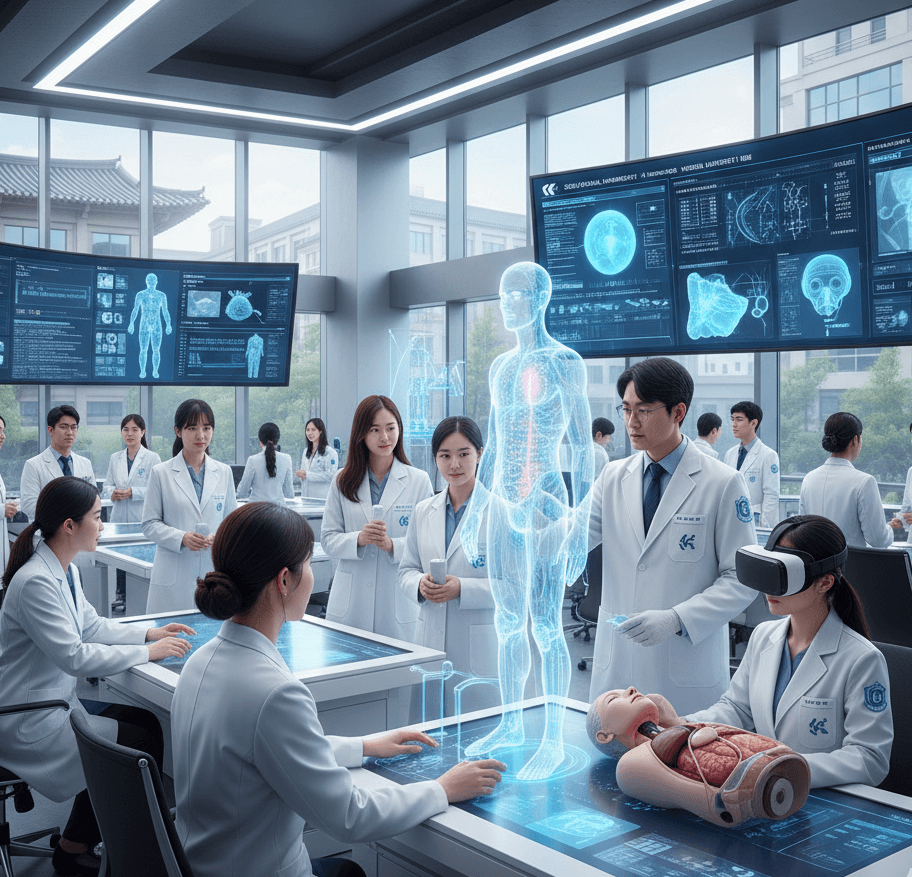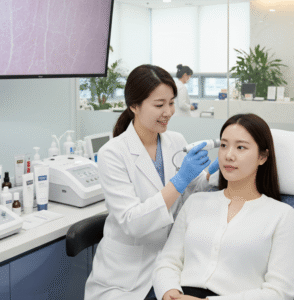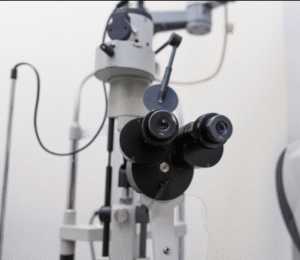Medical education in South Korea is undergoing a remarkable transformation. Universities are modernizing curricula, adopting digital tools, and rethinking the way future doctors are trained. These changes are driven by evolving healthcare demands, new technologies, and the need for more flexible, globally competitive systems.
Key Shifts in Structure and Curriculum
➤ Ending the “2 + 4” Model
For decades, Korean medical education followed a rigid structure: two years of pre-medical study followed by four years of medical courses. This system has now been replaced, giving universities greater freedom to design their own programs. Schools can now integrate early clinical exposure, systems-based learning, and multidisciplinary courses without being limited by the traditional year-by-year framework.
➤ Integrated and Interdisciplinary Learning
Instead of separating subjects like anatomy, physiology, and pharmacology, many universities are now using systems-based modules—for example, teaching the cardiovascular system across multiple disciplines in one integrated block. Collaboration between medical, engineering, and data science departments is also expanding, preparing students for the age of digital medicine and biotechnology.
➤ Early Clinical Experience
Students are entering hospitals and community clinics earlier in their education. These early experiences help them develop communication skills, empathy, and real-world clinical reasoning from the start.
Technology, AI, and Digital Learning Tools
➤ Simulation, VR, and AR Training
Korean medical schools now use advanced simulation labs, virtual reality (VR), and augmented reality (AR) tools to replicate surgeries, patient interactions, and anatomy studies. This hands-on approach improves confidence and safety before students treat real patients.
➤ AI-Based Learning Platforms
Artificial intelligence is playing a growing role in education. Adaptive learning platforms analyze student performance and provide personalized study plans. AI question banks based on medical licensing exams are helping students practice critical reasoning in Korean medical contexts.
➤ Data-Driven Research Education
Universities are investing in secure data platforms that allow students and faculty to access anonymized patient data for research and machine learning projects. This integration of data science encourages evidence-based decision-making and prepares students for the era of medical AI and big data research.
Responding to National Reforms and Workforce Needs
➤ Adjusting Admissions and Doctor Supply
To address doctor shortages—especially in rural areas—the government has pushed to increase medical school admissions. Universities now have more flexibility in managing quotas while maintaining education quality. This change requires expanding training facilities and hospital partnerships to accommodate larger cohorts.
➤ Encouraging Underserved Specialties
Korea faces shortages in pediatrics, obstetrics, emergency medicine, and regional healthcare. Medical schools are responding with targeted programs, mentoring, and career guidance to encourage students to enter these essential but less popular fields.
➤ Expanding Clinical Training Models
With more students and evolving patient needs, universities are exploring new training approaches, such as telemedicine practice, community-based rotations, and interprofessional education that includes nursing and public health students.
Raising Quality and Global Standards
➤ International Accreditation
Many Korean medical schools are pursuing World Federation for Medical Education (WFME) accreditation or equivalent recognition. This aligns local education with international standards, allowing Korean-trained doctors to work and study abroad more easily.
➤ Competency-Based Education
Schools are shifting from memorization-heavy exams toward competency-based medical education (CBME). Students are assessed through clinical skills exams, professional behavior evaluations, and continuous feedback systems to ensure well-rounded development.
➤ Peer Review and Transparency
Universities are sharing data on licensing exam results, research productivity, and graduate outcomes. This benchmarking promotes accountability and helps identify areas for improvement across institutions.
Challenges and Considerations
- Maintaining Quality Amid Expansion: As enrollment grows, schools must ensure enough qualified faculty and clinical resources.
- Balancing Autonomy with Oversight: More curricular freedom also means a greater need for accountability to national standards.
- Resource Gaps: Not all universities can afford advanced simulation centers or digital infrastructure, creating disparities between elite and regional schools.
- Faculty Adaptation: Professors must adapt to new teaching technologies and interdisciplinary content.
- Ethics and Privacy in Data Use: As AI and digital platforms become integral, strict safeguards are needed to protect patient and student data.
Opportunities and Future Directions
1. Modular National Curriculum
A unified national framework could ensure consistency in core competencies while letting universities innovate in electives and teaching methods.
2. Shared Learning Infrastructure
Developing shared VR labs, simulation centers, and data repositories across universities would reduce costs and ensure equal access.
3. Blended and Flexible Learning
Hybrid education models combining classroom teaching, e-learning, and remote collaboration can enhance learning and adaptability.
4. Student-Led Innovation
Encouraging student projects in AI, digital health, and community medicine fosters creativity and leadership.
5. International Collaboration
Dual-degree programs and global exchanges with medical schools abroad are becoming more common, helping students gain diverse clinical perspectives.
6. Continuous Assessment and Mentorship
Using data analytics, educators can track student progress in real time, identify weaknesses, and offer personalized feedback.
7. Interprofessional Team Training
Future doctors will work closely with nurses, pharmacists, and engineers. Joint training programs build teamwork and communication skills essential in modern healthcare.













